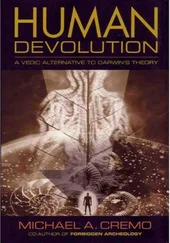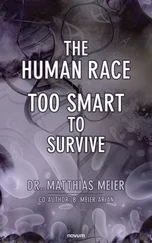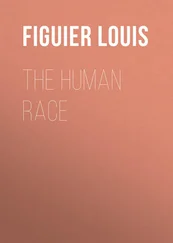Michael Cremo - Forbidden Archeology - The Hidden History of the Human Race
Здесь есть возможность читать онлайн «Michael Cremo - Forbidden Archeology - The Hidden History of the Human Race» весь текст электронной книги совершенно бесплатно (целиком полную версию без сокращений). В некоторых случаях можно слушать аудио, скачать через торрент в формате fb2 и присутствует краткое содержание. Год выпуска: 1992, ISBN: 1992, Издательство: Torchlight Publishing, Жанр: Старинная литература, на английском языке. Описание произведения, (предисловие) а так же отзывы посетителей доступны на портале библиотеки ЛибКат.
- Название:Forbidden Archeology: The Hidden History of the Human Race
- Автор:
- Издательство:Torchlight Publishing
- Жанр:
- Год:1992
- ISBN:9780892132942
- Рейтинг книги:4 / 5. Голосов: 1
-
Избранное:Добавить в избранное
- Отзывы:
-
Ваша оценка:
- 80
- 1
- 2
- 3
- 4
- 5
Forbidden Archeology: The Hidden History of the Human Race: краткое содержание, описание и аннотация
Предлагаем к чтению аннотацию, описание, краткое содержание или предисловие (зависит от того, что написал сам автор книги «Forbidden Archeology: The Hidden History of the Human Race»). Если вы не нашли необходимую информацию о книге — напишите в комментариях, мы постараемся отыскать её.
Forbidden Archeology: The Hidden History of the Human Race — читать онлайн бесплатно полную книгу (весь текст) целиком
Ниже представлен текст книги, разбитый по страницам. Система сохранения места последней прочитанной страницы, позволяет с удобством читать онлайн бесплатно книгу «Forbidden Archeology: The Hidden History of the Human Race», без необходимости каждый раз заново искать на чём Вы остановились. Поставьте закладку, и сможете в любой момент перейти на страницу, на которой закончили чтение.
Интервал:
Закладка:
Elsewhere in Hommes Fossiles et Hommes Sauvages, de Quatrefages (1884, p. 17) succinctly reaffirmed the evidence for the presence of humans in the Pliocene at St. Prest: “The researches of Mr. Desnoyers and the Abbé Bourgeois do not leave any doubt in this regard. Mr. Desnoyers first discovered in 1863, on bones found in the gravel pits of St. Prest, near Chartres, imprints that he did not hesitate to report as being made by the action of flint implements in the hands of human beings. A little later, the Abbé Bourgeois confirmed and completed this important discovery when he found in the same place the worked flints that had made the incisions on the bones of Elephas meridionalis, Rhinoceros leptorhinus, and other animals. I have examined at leisure the bones studied by Desnoyers, as well as the scrapers, borers, lance points, and arrowheads collected by the Abbé Bourgeois. From the start, I have had little doubt, and everything has been confirming that first impression. Thus man lived on the globe at the end of the Tertiary era. And he left traces of his industry; he had at this time both arms and tools. The honor of the first recognition of this fact, so little in accord with all that was believed only a short time ago, goes incontestably to Mr. Desnoyers.”
Here it should be noted that it would of course be possible to more briefly summarize and paraphrase reports such as these. There are two reasons for not doing so. The first is that paleoanthropological evidence mainly exists in the form of reports, some primary and others secondary. Very few individuals, even experts in the field, have the opportunity to engage in firsthand inspection of the fossils themselves, scattered in collections around the world. Even if one is able to do so, one is still not able to be sure about the exact circumstances of the discovery. This is critical, because the interpretation of the significance of a fossil depends as much on the exact position in which it was found as on the fossil itself. In most cases, for all investigators except the original discoverers, the real evidence is the reports themselves, which give the details of the discovery, and we shall therefore take the trouble to include many selections from such reports, the exact wording of which reveals much. Contemporary discussions of these original reports, both those which are positive and those which are negative, are also illuminating.
A second consideration is that the particular reports referred to in this chapter are extremely difficult to obtain. Almost no reference to them will be found in modern textbooks. Most of them come from rare nineteenth-century paleontological and anthropological books and journals, the majority in languages other than English. This being the case, translated excerpts of the original reports have been judged preferable to paraphrases and footnotes, and will serve as a unique introduction to a vast store of buried evidence.
A final consideration is that proponents of evolutionary theory often accuse authors who arrive at nonevolutionary conclusions of “quoting out of context.” It therefore becomes necessary to quote at length, in order to supply the needed context.
The controversy over the St. Prest finds was noted by S. Laing, a popular British nonfiction author of the late nineteenth century, whose well-researched books on scientific subjects, intended for the general public, reached a wide audience. After discussing the site at St. Prest, Laing (1893, p. 113) stated: “In these older gravels have been found stone implements, and bones of the Elephas Meridionalis with incisions evidently made by a flint knife worked by a human hand. This was disputed as long as possible, but Quatrefages, a very cautious and competent authority, states in his latest work, published in 1887, that it is now established beyond the possibility of doubt.”
2.2 A Modern example: Old Crow River, Canada (Late Pleistocene)
Before moving on to further examples of nineteenth-century discoveries that challenge modern ideas about human origins, let us consider a more recent investigation of intentionally modified bones. One of the most controversial questions confronting New World paleoanthropology is determining the time at which humans entered North America. The standard view is that bands of Asian hunter-gatherers crossed over the Bering land bridge about 12,000 years ago. Some authorities are willing to extend the date to about 30,000 years ago, while an increasing minority are reporting evidence for a human presence in the Americas at far earlier dates in the Pleistocene. We shall examine this question in greater detail in coming chapters (Sections 3.8, 4.8, 5.1, 5.2, 5.4, and 5.5). For now, however, we want only to consider the fossil bones uncovered at Old Crow River in the northern Yukon territory as a contemporary example of the type of evidence dealt with in this chapter.
In the 1970s, Richard E. Morlan of the Archeological Survey of Canada and the Canadian National Museum of Man, conducted studies of modified bones from the Old Crow River sites. Morlan concluded that many bones and antlers exhibited signs of intentional human work executed before the bones had become fossilized. The bones, which had undergone river transport, were recovered from an Early Wisconsin glacial floodplain dated at 80,000 years b.p. (before present).
But R. M. Thorson and R. D. Guthrie (1984) published a taphonomic study showing that the action of river ice could have caused the alterations that suggested human work to Morlan. Thorson and Guthrie performed experiments in which large blocks of ice containing bones frozen within them were dragged behind trucks over various surfaces, reproducing the effect of river ice scraping against rocks and gravels. In a 1986 reappraisal of his previous work, Morlan, considering the taphonomic experiments of Thorson and Guthrie, admitted “the observed effects are impressive for the hazards they might pose to recognition of artificial alterations among redeposited fossils.” He went on to note: “However some critical variables probably were not simulated adequately (e.g., texture and hardness of the substrate, buoyancy of the ice block), and it is noteworthy that many of the experimental bones are more profoundly altered than those recovered from natural environments. Certainly these experiments have not shown that all the altered fossils from Old Crow Basin can be attributed to river icing and breakup” (Morlan 1986, p. 29).
Nevertheless, Morlan did in fact back away, in almost all cases, from his earlier assertions that the bones he had collected had been modified by human agency. He gave alternate explanations, such as the river ice hypothesis, but cautioned: “The alternate interpretations do not prove that humans were not present in Early Wisconsinan time, but they show that such ancient presence of people cannot be demonstrated on the basis of evidence gathered thus far” (Morlan 1986, p. 27). He went on to say: “This conclusion differs from earlier statements, but it is not necessarily a retraction of those statements. I have definitely changed my mind about some of my earlier interpretations, but in most cases I am simply trying to enlarge our conceptual framework and to stimulate further observations and discussions” (Morlan 1986, pp. 28–29).
But even though Morlan recanted his previous assertions of human work on 30 bone specimens, he believed four others still bore signs of being definite human artifacts. At Johnson Creek, near Old Crow valley, he found a “freshfractured Bison sp. radius” in situ. The radius is one of the long bones of the lower forelimb. “Although it is not out of the question that the bison bone was broken by carnivores,” stated Morlan (1986, p. 36), “its massive size and micro-relief features indicative of dynamic fracture suggest that it was broken by man. The enclosing matrix of organic silt is suggestive of a thaw-lake deposit and yields a date of >37,000 b.p.”
Читать дальшеИнтервал:
Закладка:
Похожие книги на «Forbidden Archeology: The Hidden History of the Human Race»
Представляем Вашему вниманию похожие книги на «Forbidden Archeology: The Hidden History of the Human Race» списком для выбора. Мы отобрали схожую по названию и смыслу литературу в надежде предоставить читателям больше вариантов отыскать новые, интересные, ещё непрочитанные произведения.
Обсуждение, отзывы о книге «Forbidden Archeology: The Hidden History of the Human Race» и просто собственные мнения читателей. Оставьте ваши комментарии, напишите, что Вы думаете о произведении, его смысле или главных героях. Укажите что конкретно понравилось, а что нет, и почему Вы так считаете.












